This audit found, all products continue to use qualifier terms on the front-of-pack to indicate they are meat free. The average number of qualifiers has reduced, signalling simplification and decluttering of labels. There has been a reduction in the use of animal terminology used in the product name and if used, increased use of modified terms to indicate they are meat free and products with animal depictions exceeding 10% of the front-of-pack no longer exist in the market.
Notably, all 272 products in the audit adhere to the APC Plant-Based Meat Alternative Products Labelling Guideline. This audit supports the APC’s mission to promote responsible industry practices and consumer trust, providing insights into retail trends and updated data.
272 plant-based meat alternativeA products reviewed1
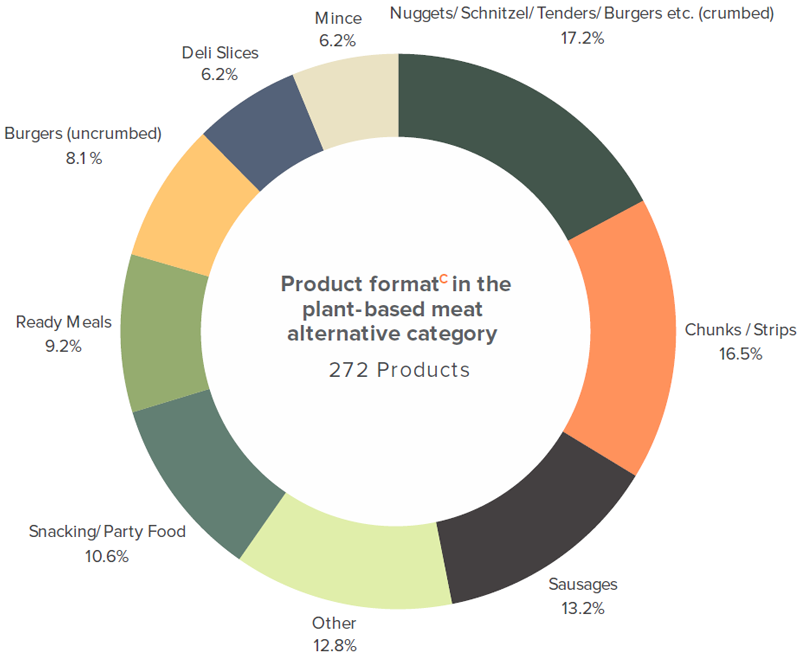
Example qualifier/modifier termsD to indicate product is meat-freeE
Example front-of-pack labelB for a plant-based meat alternative product
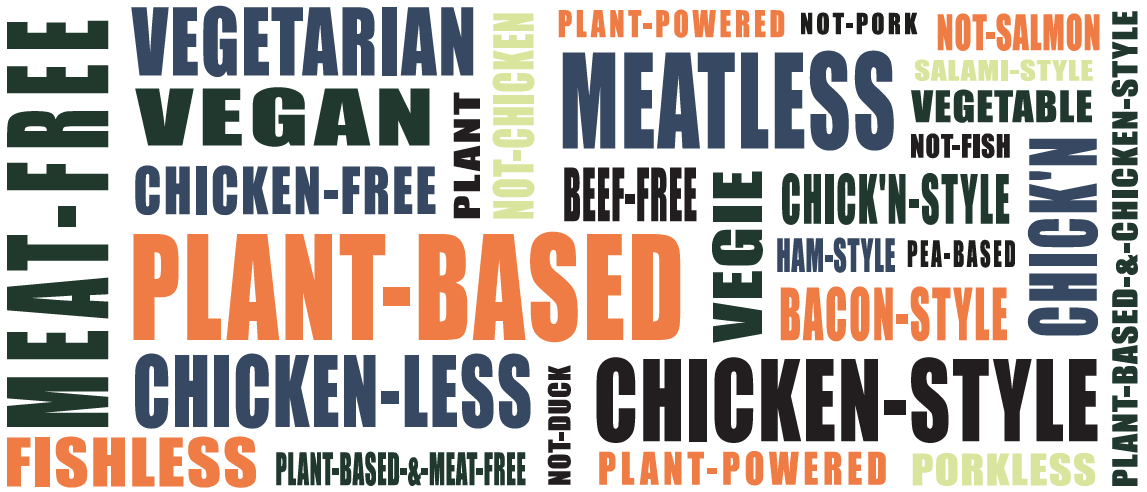
Size of terms reflects frequency of use in product namesF across 272 products
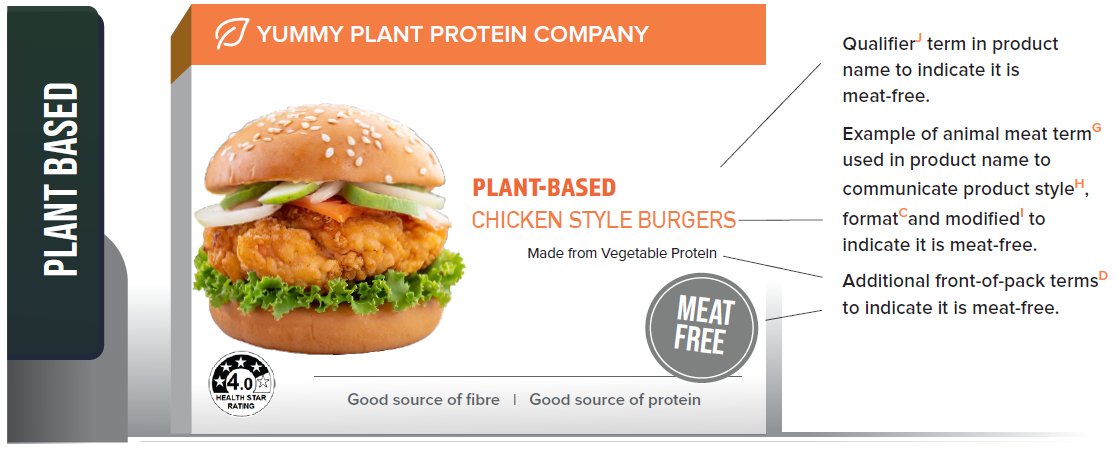
Results from 2021 and 2024 audit
Use of qualifier terms

of products use one or more terms on the front-of-pack label to indicate they are meat-free.
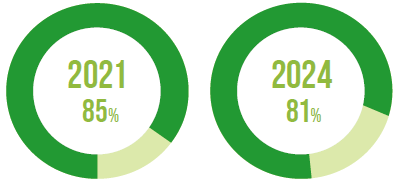
of products use two or more terms on the front-of-pack label to indicate they are meat-free.
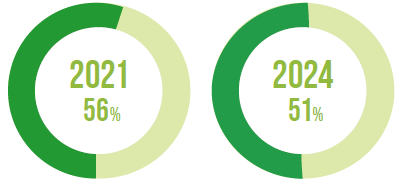
of products use three or more terms on the front-of-pack label to indicate they are meat-free.
Use of animal meat terms


of products use an animal meat term in the product name that is modified to indicate they are meat-free (e.g. ‘beefy’, ‘chickenless’), thus describing the products’ style.

of products use an unmodified animal meat term in the product name (e.g. ‘beef’, ‘chicken’) along with an average of 3.5 modifier or qualifier terms on the front-of pack to indicate is ‘meat-free’.
Use of animal depictions
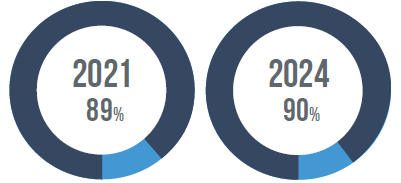
of products do not use animal depictions on the front-of-pack label.
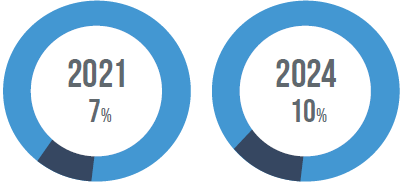
of products use animal depictions occupying less than 10% of the front-of-pack label.
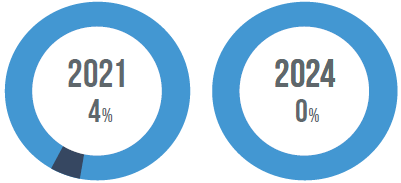
of products use animal depictions occupying more than 10% of the front-of-pack label.
Key for Data Analysis
A. Plant-based meat alternative: Products that are made from combinations of plant proteins, oils, spices, seasonings and other plant derivatives, including starches and common food additives. Generally, these products use plant proteins (most often in the form of protein isolates, concentrates and flours) or mycoprotein (protein derived from fungi) as a base to achieve a more meat-like appearance and texture than traditional meat alternatives, such as lentil burgers.
B. Front-of-pack label: The area on the front of a product, the principal display panel, that carries the product name, along with other brand and marketing imagery and information.
C. Product format: Term describing a finished food product, such as ‘burger’, ‘sausage’, ‘tender’, ‘slices’, etc, which is more relevant to the process used to create a food than the origin of the food’s ingredients.
D. Terms: A word or phrase used descriptively to communicate a product’s ingredients, style or flavour. Includes modifications (see definition below).
E. Meat-free: A product that does not contain animal meat.
F. Product name: The primary product title, which does not include the brand name and is the most visible portion of the name as it appears on a product label. Note: For a meat-free term to be considered part of the product name in this analysis, the term must have the same prominence as the product name (similar font size; of equal visibility to the product name). If a qualifier term was included near the product name, but in a smaller or significantly different font or style, leading to a lower prominence and visibility than the product name, it cannot be counted as part of the product name and was only included as a front-of-pack qualifying term.
G. Animal meat term: Refers exclusively to words: beef, chicken, duck, pork, fish, prawn, scallop, salmon; or variations on these words such as ‘beefy,’ ‘chicken-style’, which modify the term to indicate the product is meat-free. Does not include terms indicating the format of a food product, as per the definition above.
H. Product style: Term describing a product’s flavour characteristics.
I. Modification: A modification on an animal meat term changes the meaning of the original term to indicate that the product is meat-free; for example, ‘beefless’, ‘chick’n’, ‘pork-style’, and ‘chicken-style’.
J. Qualified or qualifier: A term generally used at the start of a product name to indicate the product is meat-free; for example, ‘plant-based’, ‘meatfree’, ‘no-meat’, ‘meatless’, ‘vegan’, ‘vegetarian’, etc.
Research by

Product data included in the audit is available on request to the APC at secretariat@alternativeproteinscouncil.org
The Alternative Proteins Council (APC), founded in March 2021, is the peak representative body for the Australian and New Zealand alternative protein sector, manufacturing proteins using plants, precision fermentation or cell-cultivating technologies.
Special thanks to Food Frontier, the independent think tank on alternative proteins in Australia and New Zealand, for their support of this 2024 audit project.
